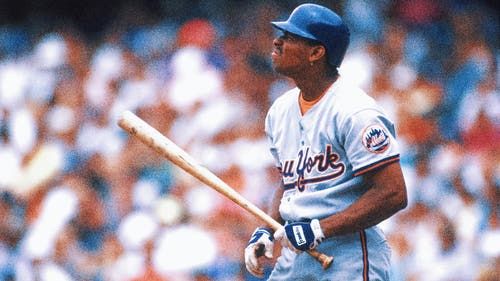
Mets crumbling under Wilpons' debts
Among the events in Mets history that will live in infamy, Jose Reyes’ defection to the Marlins ranks close to the top — right there with the trade that sent Tom Seaver to the Reds in 1977.
Yes, it’s true, Reyes is leaving of his own free will, signing a wildly overpriced six-year, $106 million contract. But his absence will be no less traumatic to Mets fans than Seaver’s. Both were superstars of their generations in Flushing. Both departures reflected badly on ownership — especially in Reyes’ case.
Make no mistake about the shortstop’s motivation: He walked not because he was greedy or had a grudge against the Mets. Reyes is history because the Wilpons opened the door and all but escorted him out. The family, steeped in debt, couldn’t afford to keep Reyes, and never had any intention of paying him another dollar once his contract expired in 2011.
GM Sandy Alderson confirmed the team’s dire financial situation on Sunday night. In admitting defeat on Reyes, he said the Mets had lost a staggering $70 million in 2011 alone.
If anything, the Marlins did the Wilpons a favor by bidding against themselves. With a deal that could pay as much as $111 million including a buyout in 2018, Miami kept the Mets from having to engage in a negotiation they didn’t have the stomach or resources for. And that’s the take-away from their biggest setback in decades: The Wilpons, clearly, are no longer able to finance a big-market team.
If Bud Selig is interested in across-the-board fairness — if he’s sincere about a uniform application of his rules — he has to take a hard look at the Mets’ finances, the same way he put Frank McCourt under a microscope.
Both are marquee franchises hurting for money. The only difference is that Selig personally detested McCourt. The Wilpons, however, have been given a much wider berth, owing in part to the commissioner’s longstanding friendship with Fred Wilpon.
McCourt had to be squeezed out of the ownership circle for misuse of the Dodgers’ assets. Now it’s time for Selig to ask what happened to the $25 million loan that MLB floated the Mets in 2010, which has yet to be repaid.
The money wasn’t a gift to the Wilpons; it was supposed to keep the Mets relevant until they regained financial stability. But still facing a mountain of debt, the Mets simply couldn’t make a concerted effort to pursue Reyes. Fact is, they never even made an offer.
If the Wilpons didn’t even try to keep their best player, what hope is there for the future? What possible sales pitch can the Mets use to bring fans to the ballpark in 2012? They’ve already lost 40 percent of the four million loyalists they drew in 2008. And with anti-ownership sentiment exploding on blogs and message boards — not to mention the likelihood of a last-place finish next summer — it’s possible the Mets will fail to attract two million fans for the first since 1997.
No wonder Alderson looked so uncomfortable answering questions on Sunday night at the winter meetings. The GM said he hasn’t given up on 2012, citing the Cardinals and Diamondbacks as examples of what a can-do work ethic can accomplish. But none of Alderson’s pronouncements sounded convincing, not as he continues to stand in front of the slings and arrows meant for the Wilpons.
Alderson, who came to the Mets with a sterling reputation, didn’t sign up to shepherd a team that’s going broke. That wasn’t in his initial job description. Yet, look at the trend line: The Wilpons are savaging what was once a $140 million payroll by some $50 million next year.
Trying to topple toe Braves and Phillies, not to mention the now-surging Marlins and even the Nationals, will be impossible on just $90 million, especially with only two established players remaining on the roster.
David Wright and Johan Santana are all that’s left, and don’t think for a minute the Wilpons aren’t already doing the math on trading their star third baseman. It’s the only way to cope with the huge checks the Mets will soon have to write.
Consider: The Wilpons owe $430 million in principal of a loan against the team, due in 2014. They owe $450 million in principal of a loan against SNY, due in 2015. They owe an estimated $600 million, due in $25 million increments every six months, on the ballpark.
And we haven’t even mentioned the collateral damage from the Madoff lawsuit, which currently stands at $83 million. That is, unless Judge Jed Rakoff’s recent ruling, which was favorable to the Mets, is allowed to stand. If Rakoff’s calculations are reversed on appeal, the Wilpons could be on the hook for hundreds of millions more.
That explains everything about the Mets’ restraint over Reyes, and their reaction to losing him on Sunday, which could be distilled to two words: Oh, well.
Nowhere in Alderson’s postmortem was a hint of embarrassment or regret at the way Reyes left, or to whom the war was lost. Not the respected franchises like the Phillies or Giants, but the upstart Marlins, who went crazy with the dollars because of one overriding obsession: They had to have Reyes in the starting lineup on Opening Day in 2012. No matter what.
The Mets? They had no such energy. They had no plan, period. Alderson’s strategy was reduced to hoping no one would consider Reyes worthy of $100-plus million. Then, in a depressed market, the Mets could play to his loyalty.
It was a long shot, to be sure, and the Mets ensured their doom by failing to make Reyes a priority. Even when they had a five-day window of negotiating exclusivity, the Mets didn’t see fit to woo Reyes. Now we know why. It’s hard to fake it when you’re broke.










